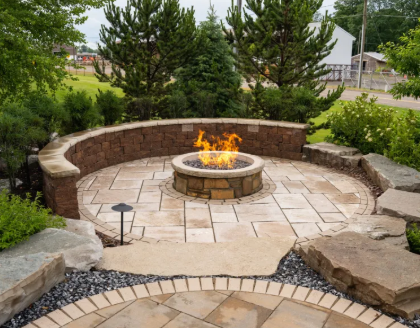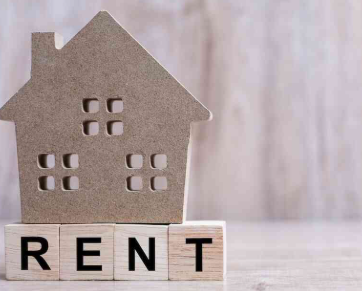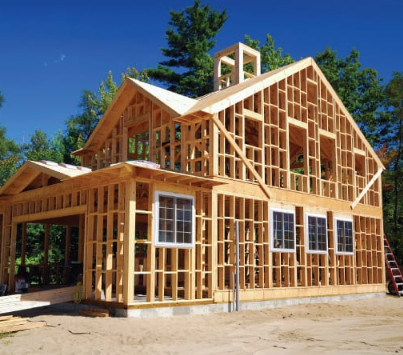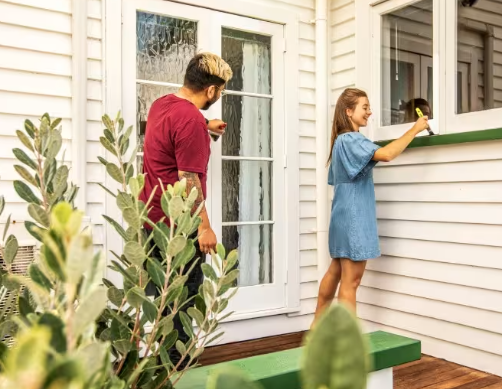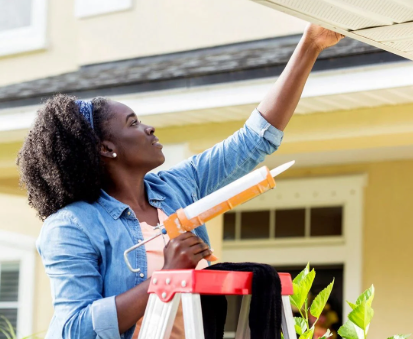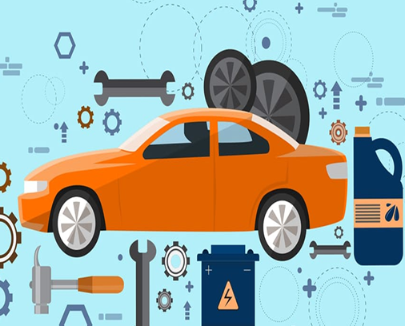Renting in the U.S.? Use this checklist for a smooth move-in and to keep your deposit safe!
1. Take Photos/Videos of the Property’s Condition (Move-in Inspection)
Key things to capture:
- Are there cracks, stains, or nail holes on the walls?
- Are there scratches or damage on the floors?
- Is furniture worn, damaged, or missing parts (if the unit is furnished)?
- Are appliances in good working order (e.g., microwave, fridge, washer, dryer)?
- Can windows open/close properly? Do they let in drafts?
- Do the bathtub, toilet, and faucets work normally? Any leaks?
- Are door locks secure and sturdy?
Recommendation: Save both videos and photos to Google Drive, and send a copy to your landlord or agent.
Purpose: This serves as proof of the pre-move-in condition, preventing unfair security deposit deductions when you move out.
2. Test All Appliances for Proper Function
Don’t wait until after moving in to discover issues—especially with essential appliances like fridges, stoves, and AC units!
Refrigerator:
- Does it have an odd smell (signaling lack of defrosting or cleaning)?
- Is there a temperature difference between the fridge and freezer? Does the thermostat adjust properly?
- Are door gaskets worn or loose? Does the door seal tightly?
Microwave / Oven:
- Does it light up when plugged in?
- Are buttons responsive? Does it heat evenly (test the microwave with a cup of water)?
- Is the oven interior clean? Any burnt odors?
- Does the door open/close smoothly? Any cracks or damage?
Dishwasher:
- Run a quick cycle to test it.
- Check for leaks or drainage issues.
- Is the sink clean? Is the filter clogged?
Washer / Dryer:
- Run a short cycle to ensure water fills, spins, and drains properly.
- Does the dryer heat up? Does the drum spin smoothly?
- Is the lint filter clean? Any dust or lint buildup?
HVAC System (if available):
- Turn on AC/heat—does it blow air and respond quickly?
- Does the remote/thermostat have batteries? Can you adjust the temperature?
- Do vents blow air evenly? Any dust buildup?
Other Optional Appliances (e.g., range hood, garbage disposal):
- Does the range hood turn on? Any strange noises or oil buildup?
- Does the garbage disposal run smoothly? Any jams or clogs?
Pro Tip:
Record a short video for each appliance, showing the full process: plugging in → turning on → running → turning off.
Report any issues to your landlord/agent immediately to avoid being blamed for pre-existing damage later.
3. Check Water, Electricity, and Gas for Proper Function
These "basic utilities" can cause major inconvenience—or even safety risks—if they fail!
Faucets & Shower:
- Turn on faucets/shower—does hot/cold water switch normally?
- Is water pressure too high or too low?
- Any dripping, leaking, or loose connections?
- Are faucet outlets clean? Any rust or odd smells?
Toilet:
- Does it flush strongly and empty completely?
- Does the tank refill automatically? Any constant running water (a leak sign)?
- Is the base leaking? Is the area around it damp?
Lights & Outlets:
- Test all light switches to ensure every room has working lighting.
- Check if outlets have power using a charger or outlet tester.
- Look for blackened marks, looseness, or sparking in outlets.
Gas Range (if applicable):
- Does it ignite quickly? Is the flame color normal (blue is good)?
- Any gas leaks? Pause near the stove to check for unusual odors.
- Are knobs easy to turn? Are burners securely attached?
Quick Tip:
Consider buying a voltage tester (under $5) for outlets.
Never attempt to fix electrical/gas issues yourself—notify your landlord or property management immediately.
Take photos/videos of problems as evidence for follow-up communication.
4. Register Your Address & Set Up Utility/Internet Accounts
First step in your new home: Ensure utilities work and mail reaches you!
Set Up Electricity Account:
Most rentals require tenants to set up their own electricity. Common providers include Eversource and National Grid.
Register 1–2 days in advance by phone or online.
Prepare these details: rental address, move-in date, ID, phone number, and email.
Some areas may require a deposit or Social Security Number (SSN).
Set Up Internet Service:
Internet is usually not included in rent. Common providers: Xfinity (Comcast), Verizon (Fios), and regional options like RCN or Spectrum.
Schedule installation online or choose a self-install kit.
Set it up early to avoid being without internet after moving in!
USPS Mail Forwarding:
Go to the USPS website to update your address.
This ensures your mail forwards automatically to your new home.
The fee is about $1.10 (for identity verification).
Important for credit card statements, utility bills, and school mail.
Tips:
If your landlord covers some utilities, confirm which ones you’re responsible for.
Save screenshots or emails of account setups to avoid billing errors.
Set up online billing with autopay to avoid missed payments.
5. Change Door Locks (If Allowed)
Prioritize safety first—make sure only you have access to your new home!
Why change locks?
- Some landlords don’t replace locks after previous tenants, leaving risks of old keys circulating.
- For standalone apartments, townhouses, or houses without property management, safety is your responsibility.
- New locks boost privacy and reduce risks of break-ins or unauthorized entry.
Check before changing:
- Does your lease prohibit lock changes?
- Get written approval from your landlord (via email is fine).
- Promise to reinstall the original lock or provide new keys when moving out.
Recommended Steps:
- Use smart locks (like August or Schlage Encode) that don’t require modifying the door.
- Or use removable handle kits, keeping the original lock as a backup.
- After changing, share a spare key or code with your landlord or emergency contact.
Special Note:
If you’re in a shared rental, landlords usually don’t allow private lock changes.
You can ask to install extra room locks (like slide bolts or padlocks) for privacy.
If there’s an electronic entry system, ask the landlord to reset the code on move-in day.
6. Check Smoke Alarms and Fire Extinguishers
More U.S. states require rental properties to have smoke alarms, and some require fire extinguishers. Confirm they work before moving in!
Smoke Detector:
- Usually installed in kitchens, hallways, and above bedroom doors.
- Press the test button to check for a loud beep.
- If silent, it may need new batteries or replacement.
- Check if it’s less than 5 years old (most last 5–10 years).
- Notify your landlord immediately if it malfunctions—this is their legal responsibility.
Fire Extinguisher:
- Check the expiration date on the label to ensure it’s valid.
- The pressure gauge should point to the green zone (full pressure).
- It should be stored in an easy-to-reach spot, like the kitchen or entryway.
- For multi-story homes, have at least one extinguisher per floor.
Tips:
If there’s no extinguisher, buy one at Target or Walmart (about $20–30).
Choose ABC-type extinguishers for kitchen or electrical fires.
Never remove or disable smoke alarms—it may violate local fire codes.
Take photos of alarm models, locations, and extinguisher expiration dates for your records.
7. Clean the Property (Even If the Landlord Cleaned)
Final step before moving in: Start fresh with a clean home!
Why clean yourself?
- Landlord or previous tenant cleanings are often basic and miss details.
- Moving brings dust and debris—your own cleaning ensures it meets your standards.
- You’ll notice issues like water stains or pests during cleaning.
Reminder:
If you’re busy on move-in day, book a professional move-in cleaning ($100–200).
Regular weekly cleaning helps maintain the property and makes getting your deposit back easier.
8. Prepare Furniture and Essentials in Advance
Don’t arrive to an empty home with no supplies! Here’s what to prepare:
Basic Furniture (for unfurnished or partially furnished units):
- Mattress: Order online for delivery on move-in day.
- Desk & chair: For work/study—foldable options save space.
- Curtains: For privacy—blackout curtains are great for bedrooms.
- Lamps: Many rentals lack lighting—table or floor lamps work well.
Essential Items:
Toilet paper, trash bags, cleaning supplies, laundry detergent, toothbrush, toothpaste, shampoo, and body wash.
Where to Buy:
- Amazon: Fast delivery for mattresses, lamps, and other items.
- Target / Walmart: One-stop shopping for in-store purchases.
- IKEA: Affordable small furniture and textiles.
- Facebook Marketplace / student groups: Secondhand deals on furniture and appliances.
Tips:
Many unfurnished rentals lack curtain rods—ask your landlord if they’re provided.
Prioritize mattresses and essentials if on a budget; add other items later.
Pack a travel kit (air mattress, portable lamp) for your first night if setup isn’t complete.
9. Read the Lease and Save a Digital Copy
Signing isn’t the end—your lease protects your rights. Read it carefully and keep it safe!
Recommended Steps:
Save the signed lease on your phone and cloud storage (Google Drive, iCloud, Dropbox).
Store key info: landlord contact details, emergency numbers, utility account info.
Learn the deposit rules, repair responsibilities, lease term, and renewal details.
Reminder:
Ask your landlord/agent to clarify any confusing terms, or consult a professional.
Leases are often needed for school applications, visas, or social security—keep them accessible.
If the lease is in English, translate key parts or ask for help understanding it.
10. Say Hi to Your Neighbors
A simple greeting can build a sense of community—good neighbors matter!
Why connect?
Neighbors value polite interactions, even with personal space.
- They can help in emergencies: leaks, fires, package theft, or noise issues.
- For apartments or houses without staff, neighbors watch out for each other.
Neighbors as Mail Helpers:
They may collect your packages when you’re away.
They can alert you to too many packages or bad weather.
Some communities have Neighborhood Watch groups to address safety issues.
Friendly Tip:
No need to become close friends—polite familiarity is enough.
For women or solo renters, knowing neighbors adds security in emergencies.
Conclusion
A smooth rental experience comes from preparation and checking off this list. If you’re new to the U.S. or moving for the first time, save this checklist to avoid mistakes. Take it step by step, and you’ll settle in safely and comfortably!
